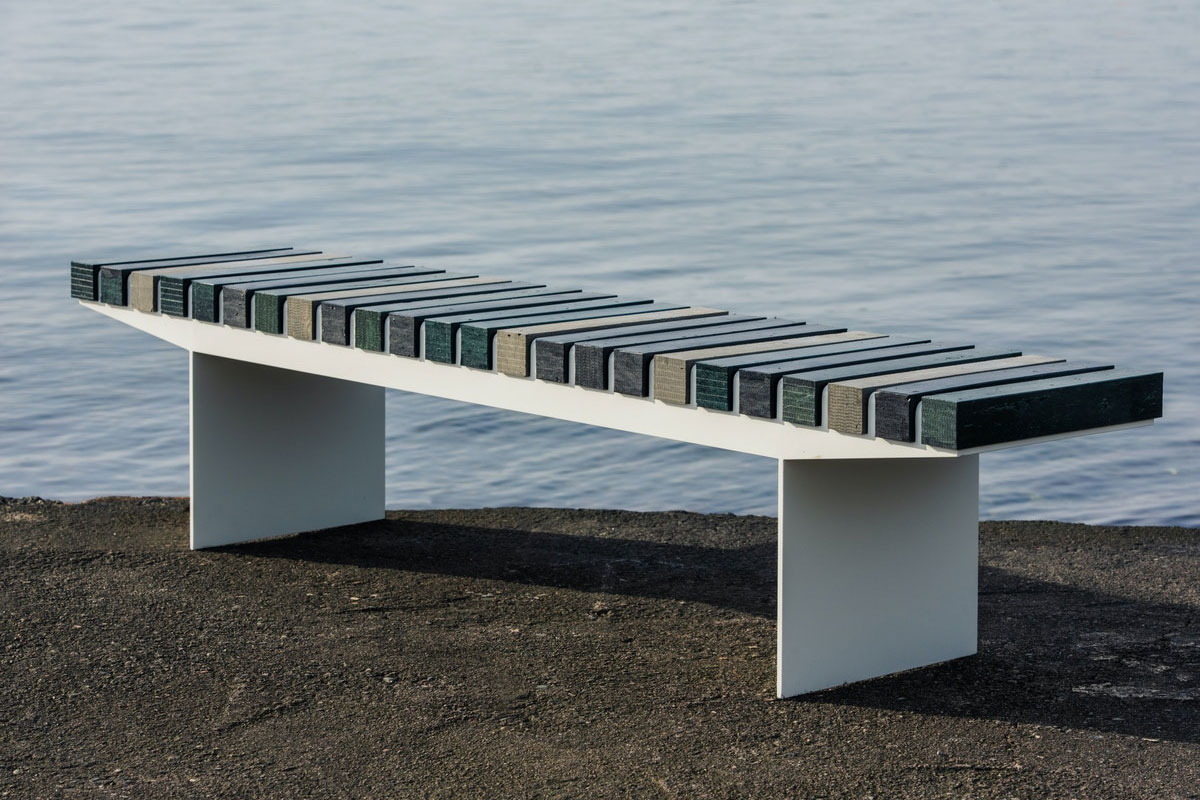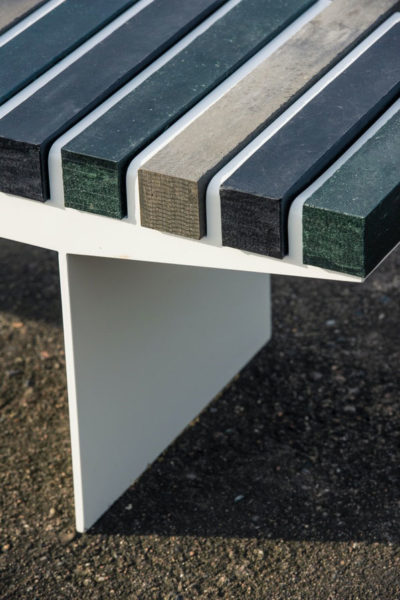Story at a glance:
- By 2040 an estimated 29 million metric tons of plastic will flow into the ocean each year.
- Outdoor furniture company Vestre has launched Ogoori, a company that collects marine plastic to be repurposed in furniture design.
- Coast, a bench made from ownerless marine plastics collected by Ogoori, is the first of its kind.
In 2010 an estimated 8 million metric tons of plastic was dumped into the ocean. By 2040 it is estimated that 29 million metric tons of plastic will flow into the ocean each year. Jan Christian Vestre wants to change that.
His company Vestre, the Norwegian outdoor furniture company started by his grandfather in 1947, has launched Ogoori, a startup that gathers marine plastic to recycle and reuse in furniture design. The initiative takes waste collected from the ocean and transforms it into plastic for brands to use in future products.
Take Coast, for instance—a bench from Vestre made from ownerless marine plastics collected by Ogoori, set to be released in 2021.
“It’s an inspiring and gratifying task to design a bench that uses plastic collected from beaches with the help of volunteers,” said Allan Hagerup, who designed the bench, in a press release. “It feels really good to have created the first bench from this material for Vestre, and to contribute to sustainable development with a product that will be accessible to everyone.”
Here are a few design details that make Vestre’s Coast bench—the first of its kind—the perfect waterfront spot.
1. Recycled Plastic Materials
- Photo courtesy of Vestre
The seat of the bench is made from Ogoori plastic waste collected from Norwegian beaches that is then submerged into a hot-dip galvanized and powder-coated steel frame made to endure the outdoors.
2. Ocean-Inspired Design
- Photo courtesy of Vestre
Besides looking to the water for its materials, Coast also borrows from the marine environment for its shape. From the front, the bench resembles a boat’s hull, while each individual row of plastic looks as if it is floating on water.
“The design has been kept as simple as possible so that it doesn’t take focus away from the marine plastic,” said Hagerup.
3. Sustainable For Years to Come
“When the material is of variable quality, it is important to consider what happens to the plastic over time outdoors,” Hagerup says. “To prevent erosion, the plastic parts must be replaced at regular intervals, through a deposit system or through a lease with regular servicing by Vestre. The frame is therefore shaped so that it is simple to replace the plastic parts as needed.”
Then, of course, the replaced plastic will be recycled again and turned into new products.







